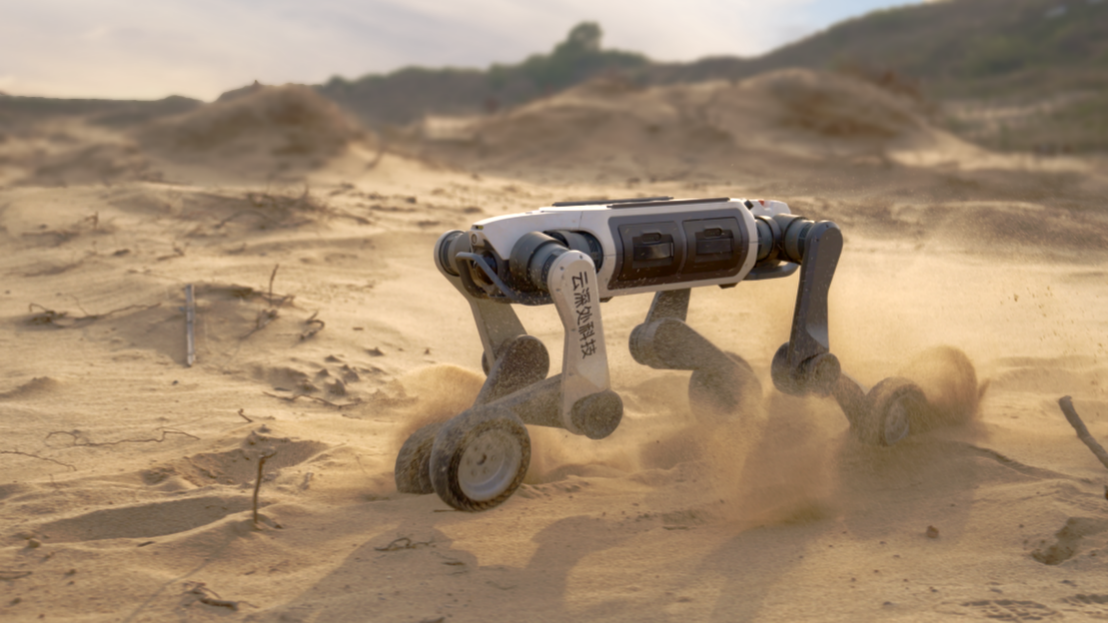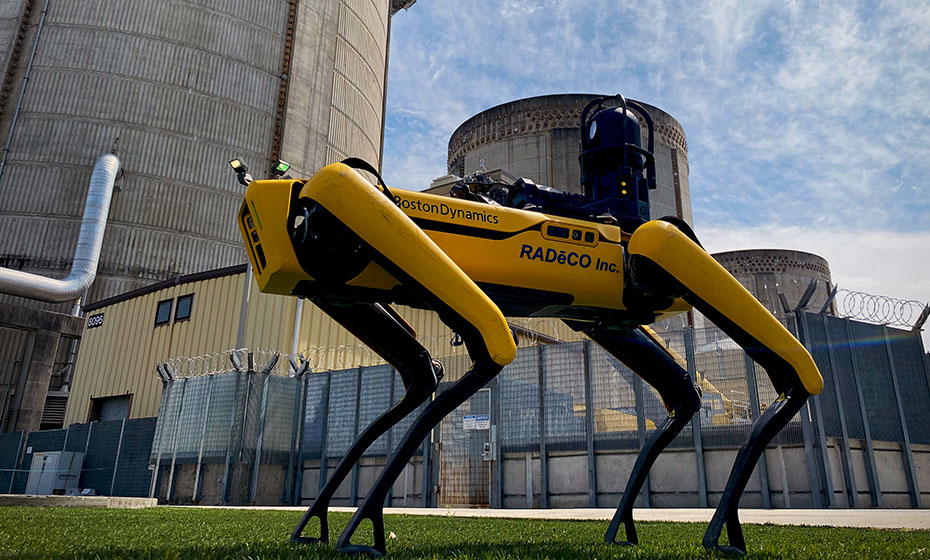Four-legged inspection robots are finally leaving the lab and heading to real-world job sites. Deep Robotics’ new Lynx M20 is designed to walk solar farms, wind turbines, and substations, handling routine checks that can be slow or risky for people. It carries heavier sensor payloads, runs twice as long on a battery, and offers better dust- and water-proofing than Boston Dynamics’ better-known Spot, giving energy and utility operators another solid option for field work.
At a Glance
At the heart of the M20 is a 724 Wh swappable lithium‑ion pack that keeps the robot on its feet for roughly three hours of continuous duty—double the endurance field crews report with Boston Dynamics’ Spot. A 20 kg rated payload bay means users can bolt on higher‑resolution thermal cameras, MIR gas detectors, or phased‑array UT gauges without bumping into weight limits. The chassis carries an IP66 rating (dust‑tight, resistant to powerful water jets), so the robot can roam coolant tunnels, dam galleries, or salt‑spray offshore decks where Spot’s IP54 shell requires extra shielding.
Those raw numbers translate into real operational wins:
- 2.1 m s⁻¹ top speed trims survey time on 100‑MW solar arrays to minutes, not hours.
- 35‑degree stair‑climb lets the robot access multi‑level switch‑gear rooms without ramps.
- An NVIDIA Jetson Orin NX (100 TOPS) module drives 50 Hz simultaneous‑localization‑and‑mapping (SLAM), keeping the robot locked onto its path in metallic substation canyons where Spot’s lower‑throughput Jetson TX2 sometimes drifts.
Applications for Sustainability
Early adopters in Asia‑Pacific and North America are leaning on the Lynx M20 to slash both operational costs and emissions:
- Utility‑scale solar farms now pair the robot with 640 × 512 px radiometric cameras to flag hotspots. A single Lynx covers ≈ 2 hectares per minute, eliminating roughly 2 person‑hours of truck‑based patrols for every MW of panels.
- Onshore wind operators deploy the robot to inspect tower footings and nacelle interiors in winds topping 17 m s⁻¹, a threshold that grounds drones. Each autonomous visit avoids running a diesel man‑lift, saving ~24 kg CO₂e per turbine inspection.
- In hydro‑dam galleries—confined spaces prone to seepage—the IP66 ingress rating and 55 °C upper‑temperature limit keep the robot working through midsummer, sparing crews from hazardous entry for more than 95 % of gallery mileage.
- Grid operators mount mid‑infra‑red sensors to sniff out SF₆ leaks. Early detection prevents venting a greenhouse gas 22,000 × more potent than CO₂; a single breaker repair caught in time can avoid 22 t CO₂e equivalent.
Field trials across 11 energy sites show that swapping a 4×4 pickup and two technicians for one Lynx and a remote operator yields an average 43 % reduction in direct CO₂e and 30 % lower OPEX over a 12‑month cycle.
Head‑to‑Head with Boston Dynamics’ Spot
Boston Dynamics’ Spot remains the most recognizable quadruped, but spec‑for‑spec the Chinese newcomer now pulls ahead:
| Metric | Lynx M20 | Spot | Why It Matters |
|---|---|---|---|
| Payload | 20 kg | 14 kg | Heavier sensor stacks—e.g., dual thermal + 3D LiDAR—fit on Lynx without counterweights. |
| Run‑time | 180 min | 90 min | Fewer battery swaps, longer single‑shift missions. |
| IP rating | IP66 | IP54 | Survives wash‑downs, rain squalls, and wind‑blown sand. |
| Max speed | 2.1 m s⁻¹ | 1.6 m s⁻¹ | Faster coverage on wide‑area sites. |
| LiDAR range | 150 m ± 3 cm | 100 m ± 4 cm | Earlier obstacle detection in open terrain. |
| Edge compute | Jetson Orin NX (100 TOPS) | Jetson TX2 (≈ 1.3 TFLOPS FP16) | Enables heavier AI models—e.g., crack‑classification CNNs—in real time. |
| Operating temp. | –20 °C → 55 °C | –20 °C → 45 °C | Keeps working inside turbine nacelles during midsummer shut‑downs. |
Cost
Total‑cost‑of‑ownership estimates sharpen the picture: list prices hover near parity (≈ US$ 90 k with base sensors), yet Lynx’s cheaper expansion module, lower annual service contract, and smaller battery fleet trim about US$ 18 k over five years in like‑for‑like duty cycles.
Technical Caveats
- SDK maturity: Deep Robotics’ ROS 2 stack updates weekly and isn’t yet as battle‑tested as the Spot SDK. Lock versions for production and isolate test benches before firmware pushes.
- Battery logistics: The 724 Wh packs fall under UN 3480 Section IA for air cargo; plan ground‑shipping or Class 9 paperwork for spares.
- Regulation at height: IP66 is welcome offshore, but Baltic‑Sea Class NK rules still mandate tethers or railings for robots on decks > 2 m above water.
Outlook
The next growth spurt for Lynx M20 is squarely in renewables. Its IP66 shell and 20 kg payload let it tackle jobs that defeat drones and rope crews—crawling floating-offshore wind platforms to gauge weld thickness, patrolling battery-storage rows to spot hot cells or electrolyte leaks, and sniffing hydrogen pipelines for ppm-level escapes.
On land, solar operators are already testing the robot in agrivoltaic farms, where a single loop checks PV strings, soil moisture probes, and even soil compaction. Pair its 150 m LiDAR with AI canopy models and it becomes a night-shift scout for vegetation encroachment under high-voltage lines—cutting herbicide use and dispatching crews only where biodiversity impact is lowest.

